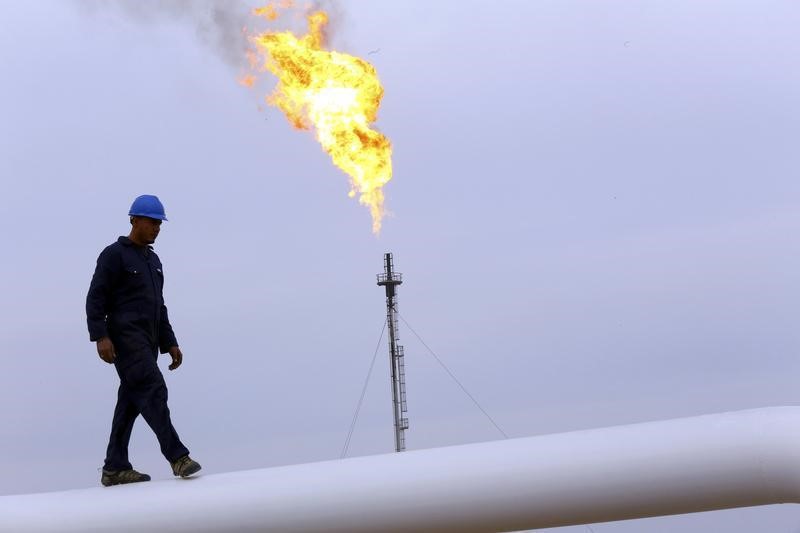By Barani Krishnan
Investing.com - Oil prices jumped 4% on Tuesday as longs in the market bet on a supply squeeze from anticipated demand, even as weekly inventory data from the U.S. Energy Information Administration could show another uptick in fuel stockpiles.
Prior to its release of crude, gasoline and distillate stockpile numbers for last week, the EIA issued on Tuesday its Short-Term Energy Outlook for January, where it bumped up by $4 per barrel its crude price estimate for 2022.
That added to the oil rally, sending the West Texas Intermediate benchmark for U.S. crude up by $2.99, or 3.8%, to settle at $81.22 per barrel. WTI earlier hit $81.58, its highest since the November peak of above $85.
London-traded Brent, the global benchmark for oil, settled up $2.85, or 3.5%, at $83.72 per barrel. Brent peaked at a two-month high of $83.93 during the session.
Brent is expected to average $75 per barrel this year, up $4 from its 2021 average, the EIA said in its STEO report.
WTI was expected to climb from last year’s average of $68.21 to $71.32 this year, the EIA said.
The premier agency for America’s energy data also forecast that US oil production was expected to reach a record average of 12.4 million barrels daily by next year as output catches up with the slowdown caused by the coronavirus pandemic.
The all-time high for US crude production, in absolute monthly numbers and not average, was 13.1 million barrels in March 2020, just before the advent of the coronavirus pandemic that destroyed demand for fuels.
The EIA said the monthly STEO monthly continues to reflect “heightened levels of uncertainty” due to the ongoing pandemic and emerging coronavirus variants such as the latest publicized strain, the Omicron. “In addition to macroeconomic uncertainties, uncertainty about winter weather and consumer energy demand also present a wide range of potential outcomes for energy consumption,” the agency added.
Besides the forecast on U.S. output, the EIA also projected that crude shipped by the OPEC+ alliance of global oil producers will rise by 2.5 million from last year to average 28.8 million barrels daily this year and 28.9 million in 2023.
Longs in the crude trade, however, brushed aside the higher production forecasts and focused instead on the EIA’s bullish price forecasts.
“Oil prices seem poised to trade between $80 and $100 a barrel as the global demand outlook still looks upbeat as most major economies are getting closer to the other side of the Omicron fence,” said Ed Moya, analyst at online trading platform OANDA.
Tuesday’s gains in oil came ahead of a snapshot of a weekly snapshot on U.S. crude, gasoline and distillate stockpiles due from the American Petroleum Institute.
The API numbers, released each Tuesday after market settlement at 4:30 PM ET (21:30 GMT), are a precursor to official weekly inventory data due each Wednesday from the EIA.
Analysts tracked by Investing.com have forecast that U.S. crude inventories fell by 1.904 million barrels for the week ended Jan. 7, adding to the previous week’s decline of 2.144 million.
Gasoline inventories likely rose by 2.408 million barrels, on top of the previous week’s 10.128 million, which was the highest in 21 months.
Stockpiles of distillates, which include diesel and heating oil, are expected to have grown by 1.757 million barrels, after the previous week’s gain of 4.418 million.
